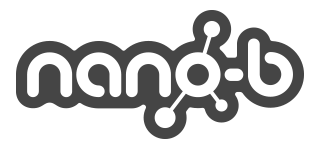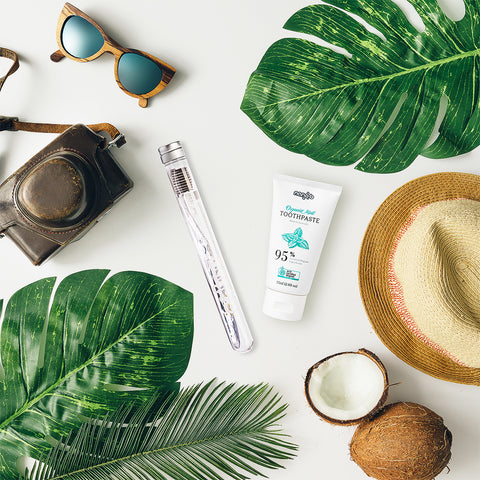It seems incredible how universal the habit of teeth brushing is all over the world. It might very well be the most widely practiced health habit people do on a daily basis. This fact left us to wonder why are we brushing our teeth?
Is it because we were told to do so when we were kids and the habit got integrated very firmly in our daily routine? Is it because we are dreading the dentist so much and think brushing is the best way to prevent meeting him? Whatever the reason is, it is great that billions of people brush their teeth every day, as the health of our gums and teeth is very closely connected to the wellbeing of the whole body.
The fact that we brush our teeth every day is great and really important, but it's even more important that we do it properly. Brushing your teeth the proper way can make a huge difference and can improve your oral health significantly. So, let's dive into the basics.
Choosing The Right Toothbrush
Not all toothbrushes are created equal. It's soothing to think of all toothbrushes as our allies that help us be healthier. Unfortunately, there are still a lot of cheap products with inferior quality on the market and many people underestimate the importance of using a safe, high-quality toothbrush. Both manual and powered toothbrushes are linked to damaging our teeth and gums and it is of crucial importance to use safe dental products.
Having the wrong brush can damage our teeth and gums and cause sensitivity and sometimes even more serious problems. That’s why we have to be smart when choosing a toothbrush and know what we need from one. A safe toothbrush should have:
- Rounded bristles - so it protects your enamel and the soft tissue of your gums from scratches.
- Small head size - you should be able to reach and clean effectively all of your teeth.
- Bristles should not be frayed - frayed bristles cannot remove plaque effectively and are a clear sign that you should replace your toothbrush.
- Comfortable in our hand and mouths - you shouldn't feel any discomfort while you brush
- Antibacterial - Bacteria from your toothbrush can enter your bloodstream, so make sure your toothbrush is clean and safe.
Choosing The Right Toothpaste
The other most widely used product in our daily oral hygiene routine is the toothpaste. Up until recently, people rarely paid attention to what toothpaste they were using. Fresh taste, recognizable brand and a decent price were all the factors users have considered. However, as customers become more and more educated other important factors start to weight more in the buying decision. This has sparked a new debate about what type of toothpaste should we use. Should it be organic or not? Should it contain fluoride? Should it be tested on animals Should it be with all natural ingredients?
There are as many opinions as there are toothpaste brands on the market, but we strongly believe that the products we use in our daily life should reflect our values and understanding of what the world should be like. Hence, we strongly recommend toothpaste products that are all natural and preferably with organic ingredients. Products that don't contain any artificial and potentially harmful chemicals, allergens, etc. And of course, products that have not been tested on animals.
At Nano-b, we truly believe that the products we use reflect who we are. Choosing the right toothbrush and toothpaste might seem like a trivial decision, but for us, it's a reflection of our values and our desire to live a healthier life while remaining close to nature.
Time and consistency is KEY

We should brush at least 2 times per day for at least 2 minutes. Every day!
For every health habit, you want to build and maintain consistency is key. Dental problems can indeed be avoided with proper and consistent oral care routine. It is very important to brush your teeth every day for at least two minutes and never skip a brushing. you don't want to leave plaque and bacteria in your mouth for a long time as tooth erosion and inflammation processes can start quickly.
Timing is really important as well. If it feels like you are rushing and not brushing for long enough, setting a timer might be a good idea. Or you can just play your favorite song and brush while it plays!
If you brush twice a day for two minutes the time spent brushing sums up to just about 24 hours per year that we invest in our health. Just one day per year and we can be healthier, happier and avoid the dreaded dental procedures.
Of course, a proper toothpaste and toothbrush are crucial and consistency will always be a very important component, but it's equally important that you use the right brushing technique, otherwise all our efforts might be in vain. You would guess that all that brushing has turned us into experts, but unfortunately, most people don't brush properly, which not only will diminish the health benefits of brushing but might even pose some dangers to your teeth and gums.
The Right Technique

You've probably heard the advice “Place your toothbrush at a 45 degrees angle”. It sounds very scientific and credible, but what it really means is that you have to aim for where the gums and teeth meet and food particles stack up. The angle also allows for a more gentle approach, that is not only more effective for cleaning but it also doesn’t damage your teeth and gums.
Use gentle, circular, massaging motion. IT's VERY IMPORTANT that you don't apply a lot of pressure to your teeth. In reality, the more gentle you brush, the better the results. Don't squeeze your toothbrush, hold it very gently and apply a very slight pressure to your teeth and gums. Let the toothbrush bristles do their job, you don't need to press too hard at all.
If you are to remember only one thing from this post, it should be to use circular, massaging motions. Gentle, circular motions will allow toothbrush bristles to get between your teeth and under the gumline and clean as much plaque as possible. Fast and hard movements will do the opposite and the bristles won't be able to clean where the most plaque is formed.
Make sure you don't miss any spots and clean all sections of your mouth (top, bottom, left, and right). All of your teeth are equally important and deserve the same attention. Dedicate the same time to each section of your mouth to make sure no teeth are neglected. Make sure the head of your toothbrush is small and nimble enough, so it can easily reach and clean the hard-to-reach places in your mouth (like your back teeth).
Hold your brush vertically to clean the back side of your front teeth with up and down strokes. This is a part of the mouth that is often neglected and not cleaned properly. You should pay special attention to your bottom front teeth as this is the place where many problems might develop if not cleaned properly and consistently.
Start from a different place every time, so you don’t develop a habit of missing or spending less time on the same spots.
Try brushing with your other hand from time to time.This is a really cool life hack that will not only keep you more focused during brushing but will also make you smarter! Many studies suggest that using your non-dominant hand for trivial tasks from time to time improves your brain functions. It turns out brushing your teeth will not only keep you healthy but make you smarter as well!
It's also a good idea to even try brushing with your eyes closed, so you can concentrate more on proper technique. It will help you focus more and avoid getting bored from brushing the same way every day.
Brush your tongue. It's where most of the bacteria in your mouth are harbored. It’s best to do it with a tongue scraper, designed for that. A toothbrush will never be effective enough - it has another purpose.
What NOT to do
Don’t scrub/press too hard. Teeth aren’t something you should scrub. Plaque is soft and loose. WebMD advises us to replace the word “scrub” with “massage” when we think about the proper brushing technique. This will help us have a better mental image of the proper way to brush.
Don't rush or spending too much time brushing. As mentioned above, both of those mistakes can lead to some teeth and gum problems. If you are rushing and using too fast movements, you are not allowing the bristles to properly get between your teeth and remove plaque effectively. On the contrary, if you are spending too much time and brushing too vigorously on the same spot, you might be wearing your enamel or irritating your gums.
Going back and forth, side to side is a nightmare for your teeth. You are jeopardizing your enamel and gums, while not removing plaque efficiently. Remember the proper way is to use gentle, circular motions.
Don’t forget your gums. Your gum line is where the biggest dangers to your oral health lie. You should pay close attention and brush gently where your teeth and gums meet. Neglecting this area might lead to unpleasant gum diseases.
Brushing in the morning

It's strongly recommended that you brush your teeth first thing in the morning. But why should we even brush in the morning, if we did it just before going to bed and didn't consume any foods or drinks (except water) overnight?
It's a good idea to clean out the existing bacteria in your mouth that have been developing overnight. Otherwise, you will be ingesting all that bacteria together with your breakfast. Your mouth is drier in the morning because saliva levels are lower while you sleep, hence, it's easier for bacteria to develop in such environment.
Brushing before breakfast increases your saliva levels and thus, protects your teeth from any acidic or potentially erosive foods that you are about to consume. In addition, you'd want to avoid brushing right after breakfast (wait at least 15-20 minutes), because if you consume any acidic foods or drinks (coffee and orange juice count as well), your teeth are susceptible to a greater acidic damage and erosion and sensitive teeth.
Since you don't want to brush your teeth immediately after breakfast, it's a good idea to remove any sugars by rinsing your mouth with water several times.
Brushing in the evening
Ideally, it's best to brush your teeth after every meal. However, we realize this is not always possible, so if you are brushing your teeth twice a day, the best time (in addition to the morning brushing), is in the evening after your last meal. It's recommended to brush at least 20 minutes after a meal, because of the same acids, mentioned above.
Going to bed without brushing your teeth can be extremely dangerous for your teeth, as all the bacteria in your mouth can feed on all of the food you've had throughout the day and produce acids that break down tooth enamel and cause cavities. In addition, the lower saliva level during the night is very beneficial for the bacteria as saliva is the best natural defense against the acids produced by the bacteria in your mouth.
A few extra things that are good to know about brushing
- Toothbrushes should be replaced after their bristles start to fray. They are not as effective in removing plaque and can even cause minor damages to your teeth and gums. Normally, most toothbrushes start to fray after 2-3 months, depending on your brushing style. Nano-b toothbrushes last up to 6 months and don't fray nearly as much.
- After you go through the flu, you should replace your toothbrush. The bacteria stays on the toothbrush and you risk to catch the same virus again. Of course, you don't have to replace your brush if you are using Nano-b, as we've made our brushes antibacterial to protect your health from threats like this.
You spend a day of each year brushing your teeth and it really makes a difference if you do it properly. It's the most widely practiced health habit around the world and for a good reason, as it is a really vital component of our overall health and wellbeing. Hopefully, you now know all the basics and will pay more attention each time you brush.
Stay healthy and happy brushing!
The Nano-b Team




Comments (0)
There are no comments for this article. Be the first one to leave a message!